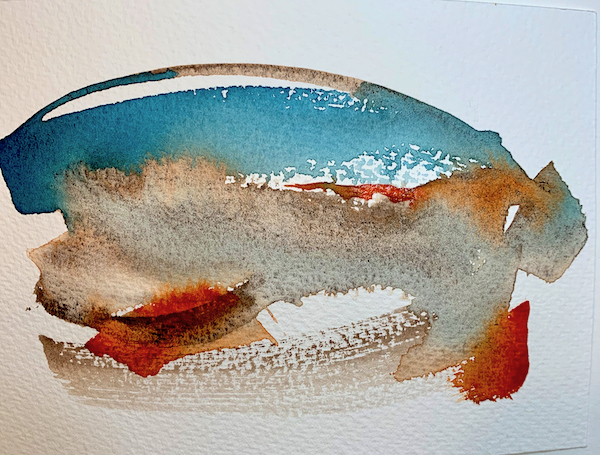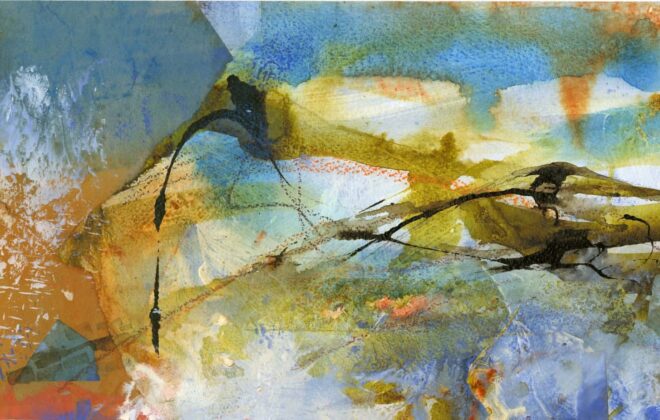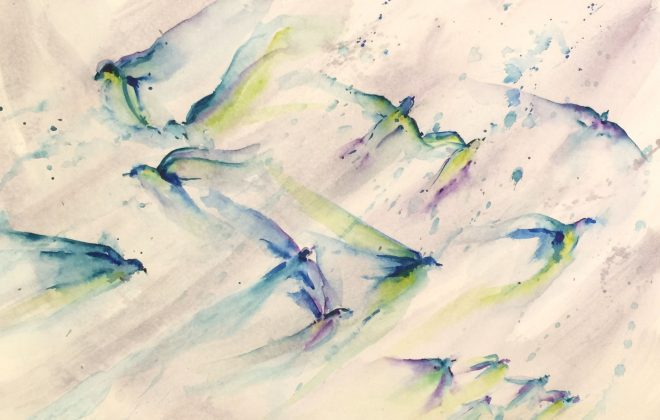Why use layering in your paintings
One of the most satisfying aspects of painting is colour, but why use layering in your paintings if you can use flat colour? Even neutral and subtle colours can be exciting. Most artists have a particular way of using colour that is their preference. For some, it is bright and bold, and for others more subtle. I am a fan of bold colour. But even more than that; I am excited by the depth and subtlety you can get when you give them a little additional complexity.
There are two basic ways to get those wonderful deep, complex colours in a painting. Colour can be mixed (on the palette or the paper), or it can be created through layering. Both painting techniques have benefits and can be used to great effect in different ways. We’ll dive into the subject of colour mixing in the future.
Why use layering in your paintings:
Adding a layer of transparent paint on a piece of art is also known as glazing. The viewer is looking through a transparent layer, as if through a pane of glass. This gives your painting a wonderful new dimension
Layering watercolour creates the impression of depth. Looking through one or more colours to see the layers below can trick the eye into seeing physically different distances between each layer. The artist can play with the viewer’s perception. Layering can create the impression that one shape is in front of, or behind another.
Beautiful, complex colours appear when you use layering skillfully in your paintings.
Areas of strong flat colour can be made even more powerful by contrasting them with sections of the painting that have subtle blends of colour.
The photograph above this post shows areas of wet in wet watercolour where colours have gently merged with each other. I added a layer of Daniel Smith Transparent Pyrrol Orange over Daniel Smith Hematite Burnt Scarlet in only one small area. The shape of the underlying brushstroke shines through the transparent layer, delivering an exciting visual pop.
I am inspired to do more layering in my painting when the first overlay of colour gives this vibration of energy to a watercolour.
Next week I’ll post some thoughts on how to create successful layers in watercolour.
Have a look at the work of David Poxon if you want to admire some masterful layering of watercolour.
Share this:
Tags In
Related Posts
Leave a Reply
Recent Posts
Recent Comments
- vandy on From pulp to perfection: The art of making watercolour paper
- What Is Watercolor Paper? | Print Wiki on From pulp to perfection: The art of making watercolour paper
- Jessica on Cleaning Used Acrylic Painting Water
- vandy on What my art taught me about myself
- Terri Webster on What my art taught me about myself
Archives
- October 2024
- May 2024
- March 2024
- January 2024
- October 2023
- May 2023
- January 2023
- December 2022
- November 2022
- October 2022
- September 2022
- September 2021
- July 2021
- June 2021
- May 2021
- April 2021
- March 2021
- February 2021
- January 2021
- December 2020
- November 2020
- October 2020
- September 2020
- August 2020
- July 2020
- June 2020
- April 2020
- March 2020
- December 2019
- November 2019
- October 2019




